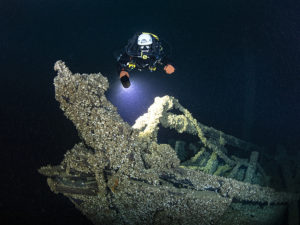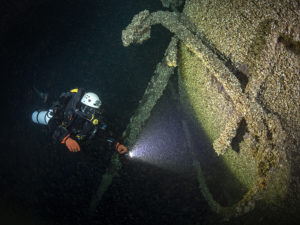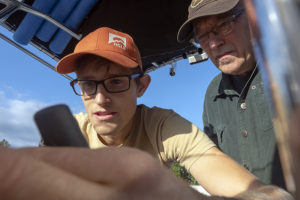 28-year-old Teddy Garlock has never been shy about reaching out to mentors. As a new scuba diver, at the age of thirteen, he contacted noted shipwreck explorer Jim Kennard. To Garlock, Jim was a local “Cousteau.” Kennard, an electrical engineer by trade, is a shipwreck enthusiast who has found over 200 shipwrecks in the Great Lakes, Lake Champlain, NY Finger Lakes and in the Mississippi and Ohio Rivers over the past 35 years. Using side scan sonar and ROVs, Kennard has spent decades on the lake searching for some of the 8000 or more shipwrecks lost in the depths. In 1983 he discovered a unique horse powered ferryboat in Lake Champlain. National Geographic featured the ferryboat in their October 1989 issue. Several other of his shipwreck discoveries have been reported in publications including Skin Diver, Wreck Diver, Inland Seas, and Sea Technology.
28-year-old Teddy Garlock has never been shy about reaching out to mentors. As a new scuba diver, at the age of thirteen, he contacted noted shipwreck explorer Jim Kennard. To Garlock, Jim was a local “Cousteau.” Kennard, an electrical engineer by trade, is a shipwreck enthusiast who has found over 200 shipwrecks in the Great Lakes, Lake Champlain, NY Finger Lakes and in the Mississippi and Ohio Rivers over the past 35 years. Using side scan sonar and ROVs, Kennard has spent decades on the lake searching for some of the 8000 or more shipwrecks lost in the depths. In 1983 he discovered a unique horse powered ferryboat in Lake Champlain. National Geographic featured the ferryboat in their October 1989 issue. Several other of his shipwreck discoveries have been reported in publications including Skin Diver, Wreck Diver, Inland Seas, and Sea Technology.
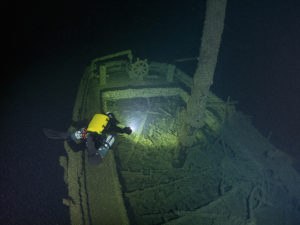 Kennard informed a disappointed young Garlock that he worked a very small team of colleagues and did not need any extra help at the time. Collaborating with the Great Lakes Historical Society of Vermillion, Ohio, he wasn’t keen on giving away locations that might endanger the protection of vital historical assets, or worse, put a young diver at risk. But Garlock didn’t give up, continuing to call Jim for advice for over a decade before he was first invited to join Kennard on a search. In the interim, Garlock trained hard. He worked his way through numerous diving courses and sought out mentors in technical diving, also learning to dive with mixed gases and rebreathers. Garlock became a cave diver and explorer on his own. Finally, under Kennard’s guidance, he learned to read side scan sonar images and was invited to be a member of the team.
Kennard informed a disappointed young Garlock that he worked a very small team of colleagues and did not need any extra help at the time. Collaborating with the Great Lakes Historical Society of Vermillion, Ohio, he wasn’t keen on giving away locations that might endanger the protection of vital historical assets, or worse, put a young diver at risk. But Garlock didn’t give up, continuing to call Jim for advice for over a decade before he was first invited to join Kennard on a search. In the interim, Garlock trained hard. He worked his way through numerous diving courses and sought out mentors in technical diving, also learning to dive with mixed gases and rebreathers. Garlock became a cave diver and explorer on his own. Finally, under Kennard’s guidance, he learned to read side scan sonar images and was invited to be a member of the team.
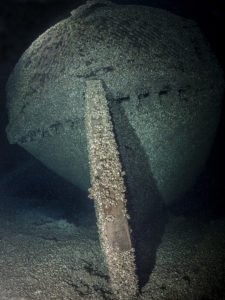 The mid-1800s schooner, Queen of the Lakes, was discovered by Kennard, Dan Scoville, and Roland Stevens in 2009. The stunning vision of the entire vessel was first spotted with a DeepVision side scan sonar system employed by the team. In 2011 they confirmed the find with an underwater remote operated vehicle.
The mid-1800s schooner, Queen of the Lakes, was discovered by Kennard, Dan Scoville, and Roland Stevens in 2009. The stunning vision of the entire vessel was first spotted with a DeepVision side scan sonar system employed by the team. In 2011 they confirmed the find with an underwater remote operated vehicle.
The vessel went to the bottom of Lake Ontario in 1906 en route to Kingston, Ontario with 480 tons of coal. She sprang a massive leak during a late November gale, forcing the captain and crew to jump into a yawl quickly. When they were less than 50 feet away from the schooner, the Queen of the Lakes disappeared into the depths. The ship, built in the Portsmouth, Ontario shipyard in 1853 came to rest with her three masts standing upright. Two davits near the ship’s wheel are slung out over the rail, having just launched the yawl.
I met Teddy Garlock, who is now a paramedic, at a dive shop in Florida. After discovering that we had a common friend in Jim Kennard, the deal was sealed to dive together in the Great Lakes. On August 30, 2018, Teddy Garlock and I had the opportunity to dive on the undisturbed shipwreck. With his father John at the helm and Kennard watching the sonar, we found the location quickly and dropped directly down on the wreck. 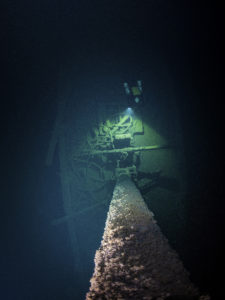 We used a helium breathing mix in our rebreather diving equipment since the wreck was well below recreational diving limits. Reaching the tip of the central mast, we saw the rough structure of the wreck another 60 feet below us. Descending to the deck, we noted cables from the sails, a small boiler, ceramic crock, and anchors. She is frozen in time, covered only by a thick layer of quagga mussels.
We used a helium breathing mix in our rebreather diving equipment since the wreck was well below recreational diving limits. Reaching the tip of the central mast, we saw the rough structure of the wreck another 60 feet below us. Descending to the deck, we noted cables from the sails, a small boiler, ceramic crock, and anchors. She is frozen in time, covered only by a thick layer of quagga mussels.
It is an honor and privilege to have an opportunity to bring back images that reveal a small piece of Great Lakes history. In Canada, a patchwork of regulations for protecting shipwrecks varies from province to province, and organizations such as Save Ontario Shipwrecks educate new divers that treasure hunting and pilfering historical wrecks are not acceptable. The Queen of the Lakes lies in US waters under the governance of New York State. The Abandoned Shipwreck Act of 1987 advises that anyone caught removing anything from a Great Lakes wreck that is over 50 years old and is not privately owned, will be prosecuted under felony charges. In respect for protecting this heritage site and the safety of other divers, this article does not offer the location or depth of the Queen of the Lakes, but makes photos available for interpretation by the public and archaeologists.
Photographs from the trip will be donated to the Great Lakes Historical Society. Jim Kennard will be releasing a book about his discoveries in the fall of 2018 with the National Museum of the Great Lakes.
More information and ROV images from ShipwreckWorld here.
